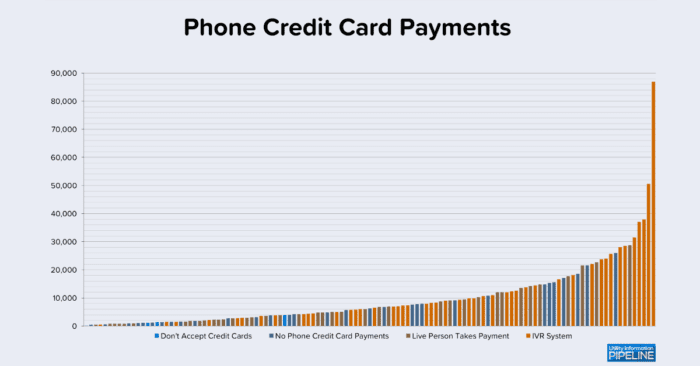This is the second of two consecutive Utility Information Pipeline issues reporting the results of the 2024 Utility Staffing Survey. 122 utilities representing 21 states, ranging in size from 20 to 137,661 active accounts participated in the survey. This is the fifth biennial Utility Staffing Survey. For sake of comparison, here are the results from previous Utility Staffing Surveys.
The last issue summarized the demographics of the survey respondents as well as staffing levels and factors outside the control of the utilities. It also introduced the concept of using a value called Annual Accounts Billed per Office Employee to compare the staffing efficiency of different utilities. If you would like to calculate your utility’s Annual Accounts Billed per Office Employee value, I’ve created an online calculator to determine this value.
In addition to asking a series of demographic questions – the number of office employees, how many active customers, what services each utility bills, and annual customer turnover – the survey also asked how each utility handles various labor-intensive processes. Today’s issue deals with practices each utility can control, such as meter reading, payment processing, bill printing, and service orders.
If you participated in the survey and would like a copy of the graphs with your utility identified, please email me.
Meter reading processing
In terms of office staffing, the actual time savings with meter readings is only between manually entering readings or importing them from some sort of automated reading process.
As anticipated, most utilities responding to the survey have automated their meter reading process. This year’s survey included 10 utilities that still enter meter readings (representing 8.26% of responding utilities), down from 15 two years ago (17.05%) and 13 four years ago (11.2%). All 10 of these utilities were all within the bottom half of most efficiently staffed offices, as represented by the graph below (clicking on any of the graphs will open a larger image in a new window).
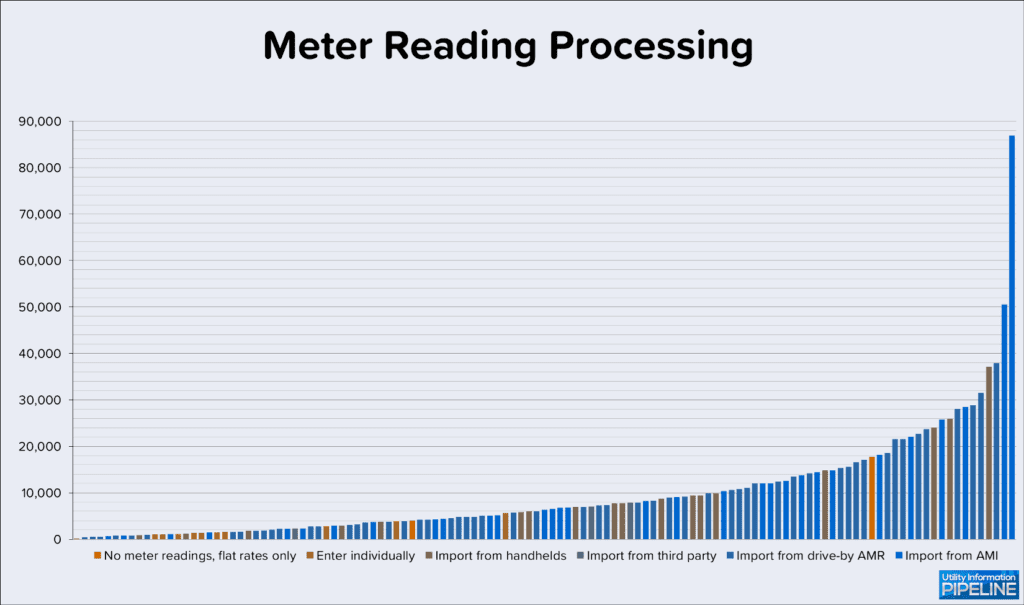
Bill printing
Bill printing and the related tasks required for preparing bills for mailing – separating postcards or folding and inserting full page bills, sorting, and traying the mail – are labor-intensive tasks.
Not surprisingly, the top 22 and 38 of the top 44 most efficiently staffed offices use an outsource printer to print their bills. On the other hand, only three of the 27 least efficiently staffed offices outsource the printing of their bills.
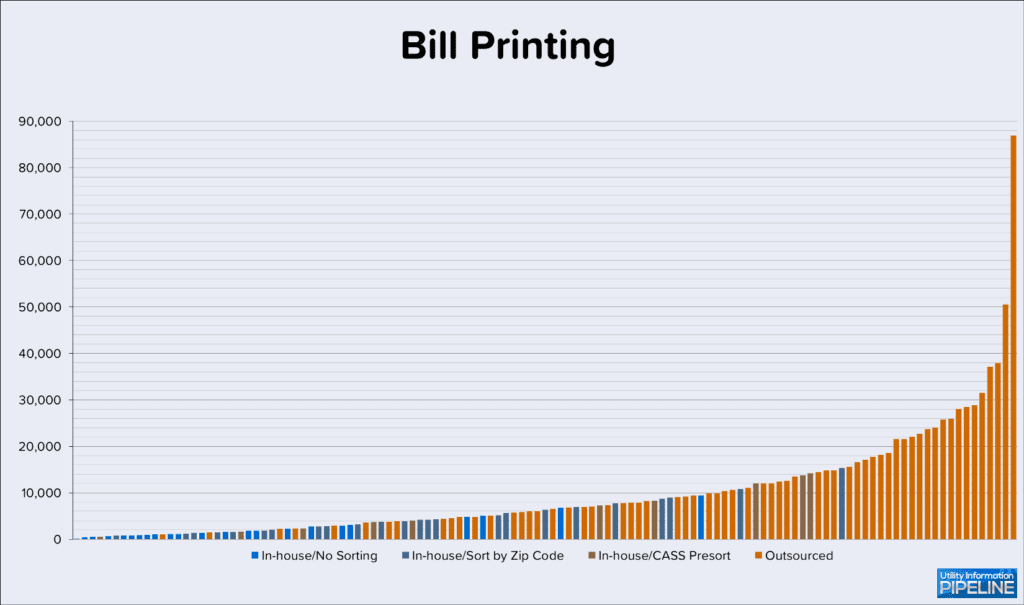
Mail payment processing
Mail payment processing is quite possibly the most laborious process in most utility offices. For that reason, many utilities have sought to automate the processing of mail payments, either by scanning barcodes on the bill, using a remittance processing system, or a bank lockbox.
Surprisingly, a considerable number of utilities still enter payments by keying them. This year’s survey found 76 of the 121 utilities (62.81%) manually entering payments. This was slightly higher than two years ago (62.50%), which was the highest of all four previous surveys.
10 of the 13 most efficiently staffed utilities automate the mail payment process in some way, while 24 of the 28 least efficiently staffed utilities manually enter mail payments.
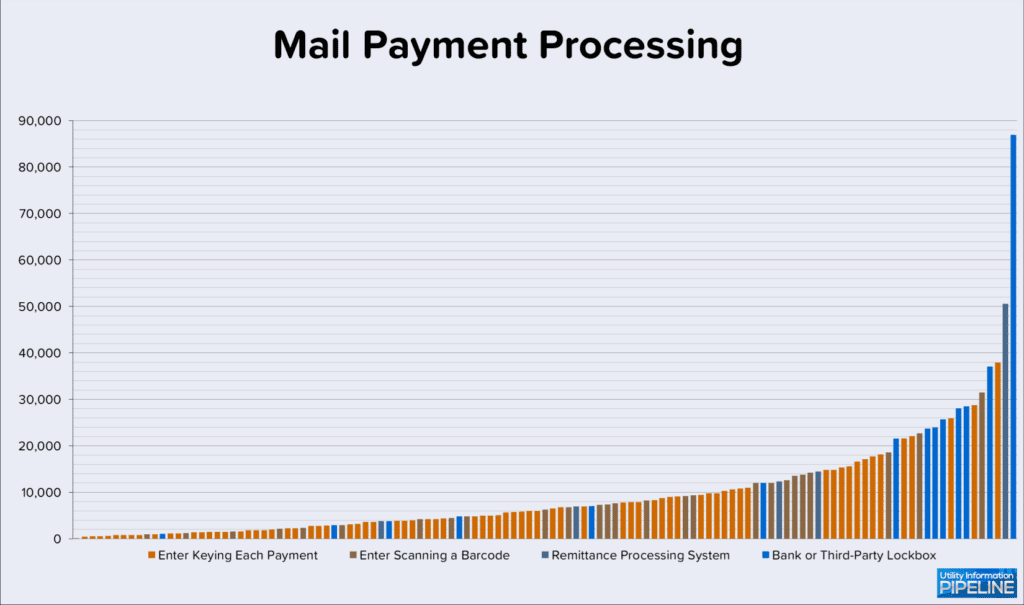
Phone credit card payments
The next area the survey asked about is phone credit card payments. This can be an extremely laborious process considering the customer service representative must look up the account, tell the customer how much is owed, take the credit card number, process the payment authorization and, finally, enter the payment in the system.
Four of the responding utilities don’t accept credit cards and 31 more don’t accept phone credit card payments. Of the rest, a live person takes the payment for 39 utilities (representing 32.23%) and 47 use an IVR system (38.84%).
Once again, use of an IVR system continues to show a consistent, year-over-year increase since the inception of the Utility Staffing Survey. Use of IVR systems has increased each year from 24.66% in 2016 to 38.84% this year.
If your office is still taking credit card payments in person, here’s a blog post that explains why this is not a good business practice.
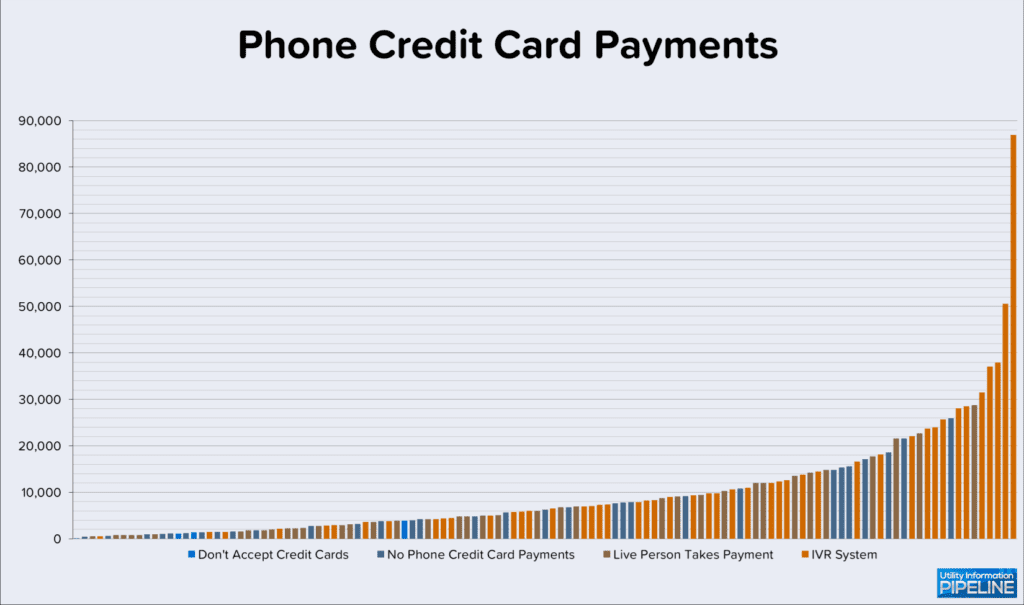
Service order processing
The final area of the survey is service order processing. The survey queried whether utilities used paper or electronic service orders and if they were integrated with the billing software or not.
Four utilities chose the “Other” response and here are their responses:
- Text or phone call to the Water Operator
- Text from office with paper copy next day
- Electronic with meter reading software
- Phone/Email
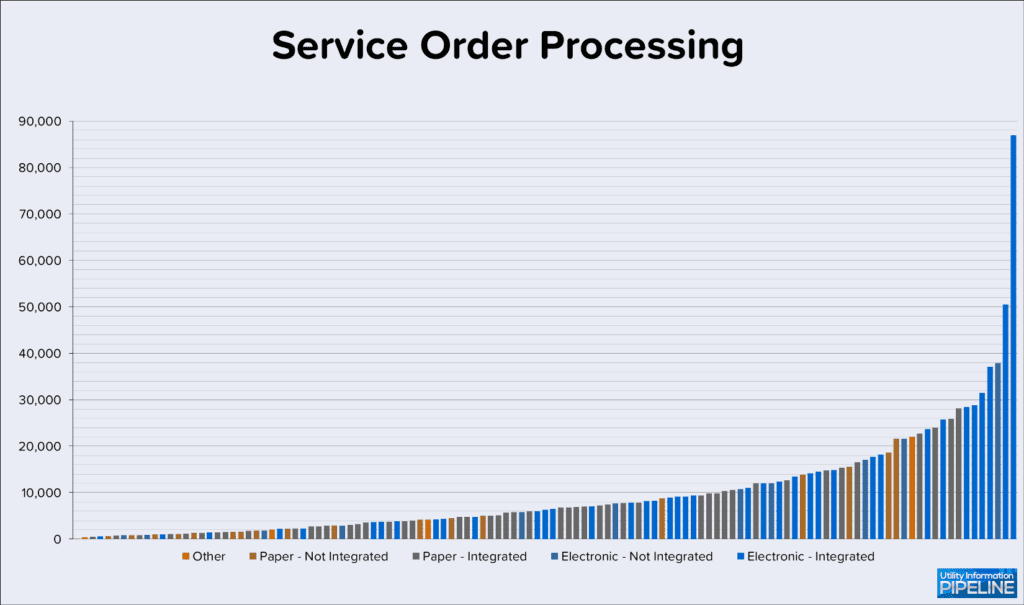
Is your office adequately staffed?
If you think your utility is understaffed or could operate more efficiently, please give me a call at 919-673-4050 or email me at gary@utilityinformationpipeline.com to learn how a business review could help you determine this.

© 2024 Gary Sanders
